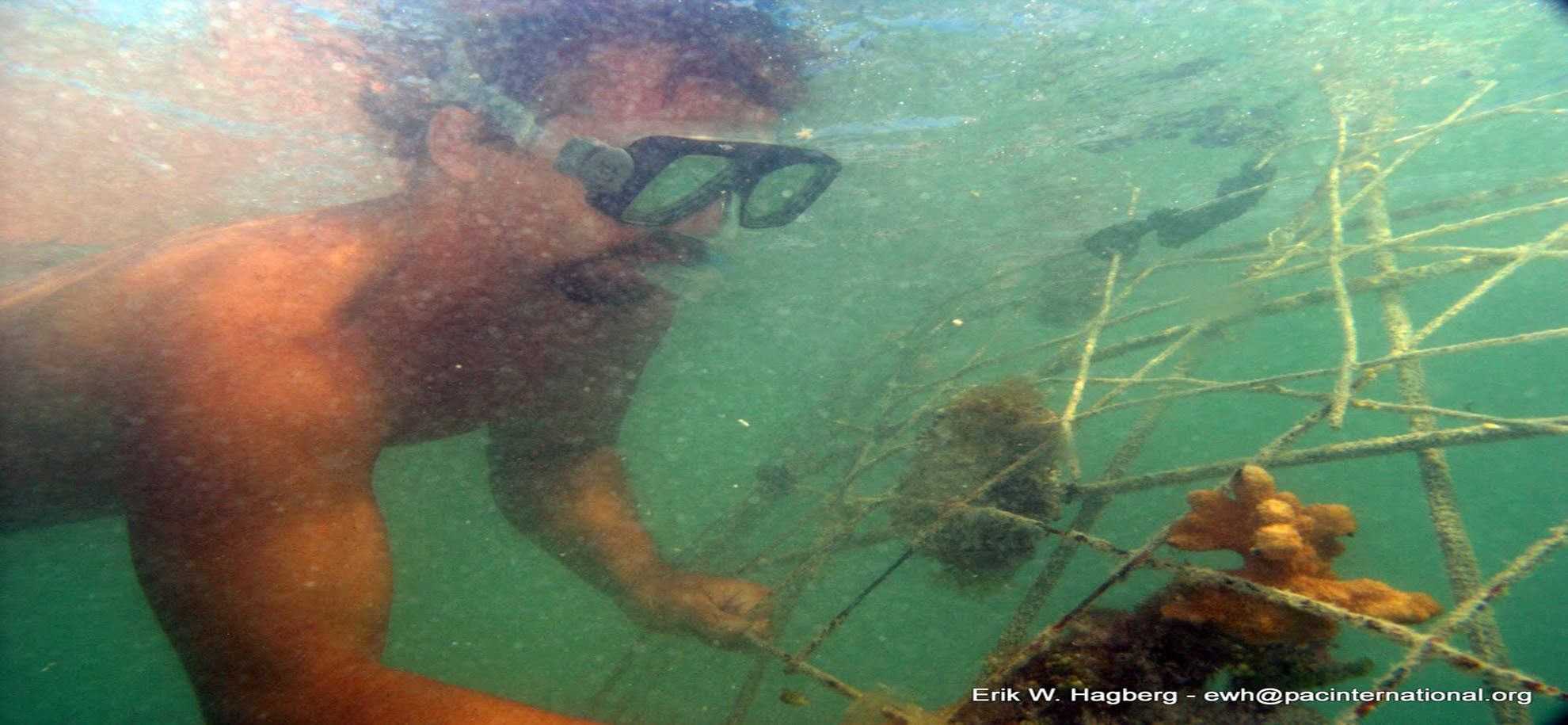Value Added Processing
System Modernization and Processing
Pacific Aquaculture Cooperatives International (PAC) will endeavor to design development programs to efficiently manage its mission throughout the South Pacific region. One of the design strategies will be creatively applying information technology in its missions. However, the inadequate source of telecommunications capacity in many island countries combined with an organizational culture that prefers decentralized, non-standard solutions have presented challenges. This situation will prevent PAC from realizing efficiencies and other benefits of a common worldwide technology platform connecting headquarters and mission - based systems. Lack of widespread use of personal computers, e-mail, radio, and office automation without a standard global strategy for business applications has led to disconnected "islands of automation" throughout the Pacific Rim. This has resulted in extensive use of unique, informal and un-audited data and systems for reporting at each mission and at a high cost. In addition, timely, accurate and reliable standardized management reports are, often not, able to be produced.
Recently PAC recognized the need to modernize, standardize and integrate its business processes into a single global business platform. The current assessment of the aquaculture business climate in the South Pacific region is that business systems remained slow, cumbersome, based on obsolete business practices and technology, and out of compliance with international standards. The challenges of the 21st century require that PAC develop management systems that provide:
* Faster, more cost-effective processing of transactions and delivery of foreign assistance overseas in the shipment and delivery process.
* Improved surge capacity for emergencies and unanticipated workload spikes
* Elimination of paper-processing, freeing employees to perform higher-value work
* Comprehensive, consistent, and timely information to buyers worldwide, enabling them to monitor, direct, and respond to procedural inventory and shipment process in a time efficient manner.
* Systems that work together seamlessly to merge financial management, procurement, shipment, and management reporting into one easy-to-use system
* State-of-the-art internal controls to prevent and detect unauthorized activities The Response
In recognition of these challenges, the PAC will develop a Pacific Aquaculture Cooperatives Business Systems Modernization (PACBSM) plan to establish a worldwide business platform capable of supporting high levels of performance. The goal of the PACBSM initiative is to enhance the processing, procurement, and shipment of its products and services through radio and Internet-enabled, globally deployed systems and standardized processes and practices. The PACBSM initiative is incorporating the lessons learned from past aquaculture industry efforts and is designed to focus on customer and employee needs.
PAC Web-based Management and Marketing System (PACWMS) - Enabling Fast, Transparent and Accountable Transactions
Deployment of PAC System overseas will extend the headquarters core management and marketing system to PAC's world-wide missions and when fully implemented will be the central component of the PAC's global business platform. The overseas deployment of a Web-based management and marketing system will provide an affordable and standardized company-wide system for holothurian fisheries farming, processing, management, and marketing. PACWMS will augment the current aquaculture procurement and management system that is slow and cumbersome with one that is both compliant with federal regulations and highly efficient. A key benefit is that farming and processing transactions that become posted into the system automatically serve to provide accurate information to industry trade and scientific agencies.
Joint Acquisition and Assistance Management System - Enabling Accurate Procurement Data Anytime & Anywhere
The Joint Acquisition and Assistance Management System (JAMS) is the other core building block of PACWMS global business platform. Similar to the collaboration effort on management systems under PACWMS, PAC will coordinate the implementation of a new procurement system with Federal and State governments. Modernizing acquisition and assistance processes and integrating these transactions within PACWMS is critical to PAC's ability to reduce transaction cycle time, accelerate the delivery of foreign assistance, procurement, and shipment where it is needed, and produce more timely and accurate business information.
Program Management Office - Providing Project Management Support
A Program Management System will be established to provide project and portfolio management support to PAC's capital investments including those comprising the BSM initiative. The PMS will implement centralized and structured coordination of these major initiatives; oversee and monitor project performance; and measure project results. A key responsibility of the PMS is to assure that PAC, in partnership with the Federal and State governments, develops an Enterprise Architecture that informs the rational investment of it's resources in support of PAC's business goals.
Achievements
Capital Planning and Investment Control - Accountability for Investments
PAC will establish a new Capital Planning and Investment Control (CPIC) procedures that are streamlined and compliant with federal and state regulations. The new procedures are designed to implement investment practices that are supported by comprehensive business cases, evaluation and control mechanisms, and be approved by a high level executive body representing country-wide business interests. To ensure approved projects are meeting the objectives described in business cases, quarterly progress reports will be required.
Next Steps
PAC will develop an Executive Information System (EIS) - an enterprise-wide automated reporting system that integrates program performance, budget, accounting, and procurement, fisheries management, and delivery information. This information system will facilitate data analysis and reporting to meet the needs of the company, industry trade and scientific agencies, and federal and state agencies. An EIS will enable managers to obtain information from PAC's database to make informed decisions, track program performance, and gather relevant trade and marine data.
PAC Focuses Its Efforts To Promote:
* Economic development and trade
* Increased stewardship of the marine environment
* Joint revenue sharing & employee ownership
* Alleviation of poverty
* Sustainable farming, scientific research, and protection of natural marine biological resources
* Sustainable solutions to today's global food crisis and for tomorrow's growing food needs through sea farming
* Promote democracy and good governance
Becoming a World Leader in Sustainable Aquaculture
PAC'S mission is to become a world leader in the sea cucumber farming industry, providing unique and innovative aquaculture solutions to third-world countries that promote sustainable economic, environmental, and human development.
Joint Venture Revenue Sharing
PAC offers trade, commerce, joint venture revenue sharing, sustainability of marine and other natural resources, and the propagation of new and nutritious foods, as well as new sources of biological material for production of the next generation of pharmaceutical wonder drugs.
Exemplify Social and Environmental Responsibility
PAC exemplifies social and environmental responsibility through the application of and training in practical sea farming methodologies that will create meaningful and productive jobs in less-developed countries.
testimonials
Sea cucumber fishing is very important to the livelihoods of coastal communities, particularly artisanal and small scale fishers in developing countries. Therefore, socio-economic issues in sea cucumber fisheries are important and should be recognized and incorporated in fishery management programmes. In particular, livelihood options should be made available to fishers if management regulation put restrictions on the fisheries, such as bans on fishing."Advances in Sea Cucumber Aquaculture and Management", the Fisheries Department of the Food and Agriculture Organization of the United Nations (FAO), 18 October 2003
Limitations in our current antiviral treatment options and the continuing emergence of new pathogenic viruses have contributed to a growing need for new and effective chemotherapeutic agents to treat viral diseases. The marine environment provides a rich source of chemical diversity for the screening and identification of new compounds with desirable antiviral properties. Many of the new and structurally distinct metabolites that have been found in marine algae, invertebrate animals, and microorganisms have pronounced biological activities and constitute a valuable chemical resource for the discovery of lead compounds that may aid in the development of new antiviral therapies."Current Medicinal Chemistry - Anti-Infective Agents", Volume 3, Number 3, September 2004, pp. 233-249

